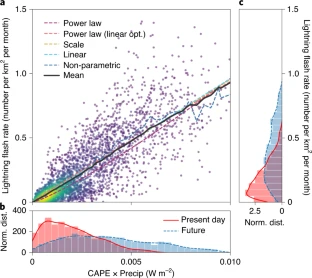Science Daily April 5, 2021
An international team of researchers (USA – UC Irvine, UC Berkeley, Lawrence Berkeley National Laboratory, the Netherlands) projected how lightning in high-latitude boreal forests and Arctic tundra regions will change across North America and Eurasia as the climate continues warming and Arctic weather during summertime will be closer to those seen today far to the south, where lightning storms are more common. Looking at over-twenty-year-old NASA satellite data on lighting strikes in northern regions they constructed a relationship between the flash rate and climatic factors. They estimated a significant increase in lightning strikes as a result of increases in atmospheric convection and more intense thunderstorms. Fires started by lightning burns shrubs allowing forest to grow which absorb solar energy and contribute to warming. More fires mean more permafrost will melt releasing greenhouse gases carbon dioxide and methane driving even more warming. Melting ice will affect food webs in the region. The findings may lead to monitoring Arctic and boreal latitudes for lightning strikes and the fires they might ignite…read more. TECHNICAL ARTICLE

Contemporary lightning flash rates across high-northern-latitude regions are positively correlated with the product of CAPE and Precip. Credit: Nature Climate Change (2021)